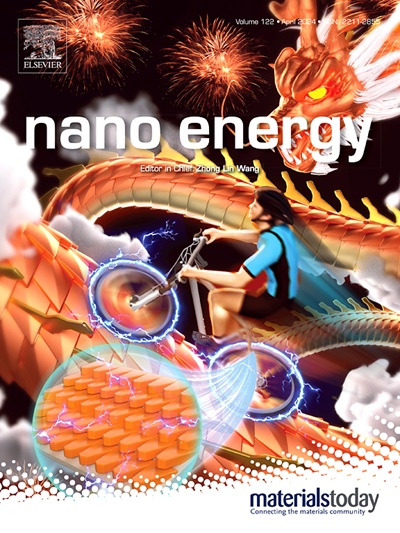Achieving High Efficiency 253 nm Micro-LED by Multiple Nano AlN Insertion Layers for Applications in Charge Management and Optical Communication
IF 16.8
1区 材料科学
Q1 CHEMISTRY, PHYSICAL
引用次数: 0
Abstract
Ultraviolet-C micro light-emitting diodes (UVC micro-LEDs) have attracted extensive attention across various fields, including optical communication, aerospace, phototherapy, and sensing. However, the external quantum efficiency (EQE) of UVC micro-LEDs remains suboptimal due to several challenges, such as the limitation of the substrate extraction cone, the lattice mismatch between the substrate and the epitaxial layers, and the sidewall damage. In this work, UVC micro-LEDs with high efficiency, high reliability, and high bandwidth are realized by adding AlN thin layers into the electron blocking layer (EBL), which leads to a record-breaking peak EQE of 3.55% and a peak wall plug efficiency (WPE) of 3.34% at 253 nm. Subsequently, we investigate the degradation mechanism through accelerated aging tests and conduct charge management experiments specifically for the TianQin project. The 6545-h L70 lifetime and the temperature cycle impact experiment further substantiate the high reliability of these UVC micro-LEDs. Additionally, the impressive -3 dB bandwidth of up to 485 MHz and the data rate reaching 1.69 Gbps highlight their potential in UVC communication applications. This research not only offers valuable insights for enhancing the performance of UVC micro-LEDs, but also underscores their significant potential in the field of charge management and UVC communication.

求助全文
约1分钟内获得全文
求助全文
来源期刊

Nano Energy
CHEMISTRY, PHYSICAL-NANOSCIENCE & NANOTECHNOLOGY
CiteScore
30.30
自引率
7.40%
发文量
1207
审稿时长
23 days
期刊介绍:
Nano Energy is a multidisciplinary, rapid-publication forum of original peer-reviewed contributions on the science and engineering of nanomaterials and nanodevices used in all forms of energy harvesting, conversion, storage, utilization and policy. Through its mixture of articles, reviews, communications, research news, and information on key developments, Nano Energy provides a comprehensive coverage of this exciting and dynamic field which joins nanoscience and nanotechnology with energy science. The journal is relevant to all those who are interested in nanomaterials solutions to the energy problem.
Nano Energy publishes original experimental and theoretical research on all aspects of energy-related research which utilizes nanomaterials and nanotechnology. Manuscripts of four types are considered: review articles which inform readers of the latest research and advances in energy science; rapid communications which feature exciting research breakthroughs in the field; full-length articles which report comprehensive research developments; and news and opinions which comment on topical issues or express views on the developments in related fields.
 求助内容:
求助内容: 应助结果提醒方式:
应助结果提醒方式:


